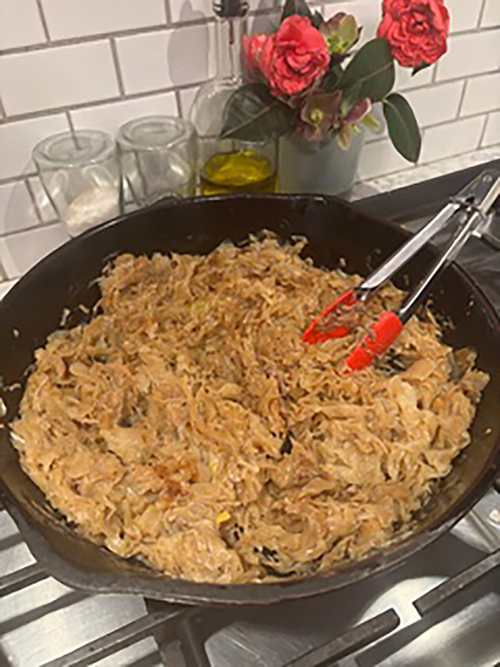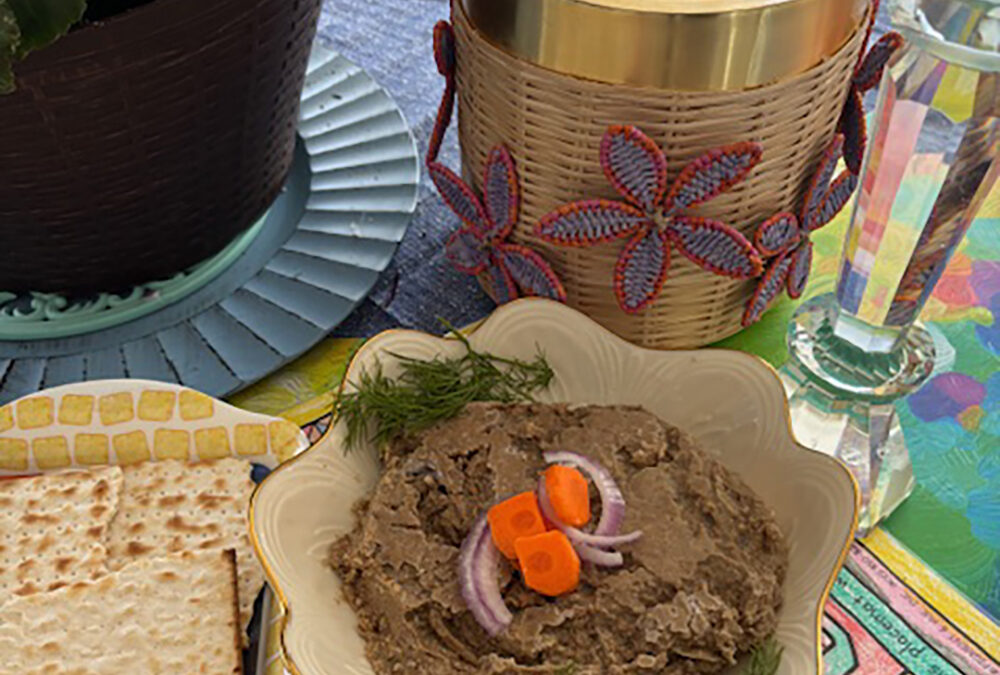Life is What Happens
By Lisa Zaslow Segelman
“Dayenu” means “it would have been enough” in Hebrew and is the refrain of a lively Passover song. It lists blessings God bestowed on the Israelites, emphasizing that each act alone would have sufficed, yet God did more.
Passover commemorates the Exodus from Egypt when Moses led the Israelites out of slavery. Jews are encouraged to personally connect with the story, imagining themselves as once enslaved. The Haggadah says, “We were slaves in Egypt”—not “They were slaves.”
Though Yom Kippur is the holiest Jewish holiday, Passover is the most widely celebrated. A 2013 Pew survey found that 70% of U.S. Jews attended a seder the previous year.
It’s all about the ‘kinder’ (Yiddish for children)
The most important goal of the seder has remained the same for over 3,000 years: telling the story to the children, no matter how chaotic or imperfect the evening may be. People have lasting memories of seders at their grandparents’ or aunts’ houses—of the youngest asking the Four Questions and the oldest answering them. They remember who brought which dish each year, complete with comparisons. Somehow their mom’s matzo balls are always better than what they’re enjoying at the moment.
As easy as the story of Passover is, preparing a seder is more complicated. There are ritual foods that make up the seder plate—each with its own meaning—followed by an appetizer, soup, the festival meal, dessert and, of course, prayers of thanks for the meal, the abundance and the freedom.
Chopped liver:
The peasant’s Pâté
Chopped liver is a hearty, earthy spread made with chicken liver, caramelized onions, schmaltz (rendered chicken fat), and hard-boiled eggs. Traditionally served with matzo or crackers, it has roots in Medieval Germany, where Ashkenazi Jews used goose liver. Later, Eastern European Jews adapted the dish with chicken or beef liver, bringing it to America in the late 1800s.
Schmaltz, essential in many Ashkenazi recipes, adds depth to dishes like matzo balls and chopped liver. In times of scarcity, nothing from the chicken was wasted—schmaltz and gribenes (crispy chicken skin) made use of every part.
Though respected within Jewish communities, chopped liver is often seen as a “poor man’s pâté” outside of them. It’s humble, hearty, and best enjoyed thickly spread on rye bread or matzo.
My Grandma Dora’s Chopped Liver Recipe
Serves 24 people, more if served with matzo, 12 if served as an appetizer
Prep Time: 1.5 hours
Equipment:
- Large cast iron skillet or non-stick skillet, consider using two at once
- Food processor or blender
Ingredients:
- 3 pounds chicken livers
- ½ cup chicken schmaltz, divided or ½ cup vegetable oil
- 8 large onions, sliced thin
- 8 hard boiled eggs
- Salt, 2 teaspoons or to taste
- Black pepper, 1 teaspoon or to taste
- 1 cup gribenes/chicken skin crackle (optional, see note below)
- ¼ cup brandy or to taste
- 4 T. minced parsley
Method:
1. OPTIONAL: Prepare the schmaltz and gribenes ahead of time (see below). Set aside. If you can’t find chicken schmaltz at your supermarket or deli, use oil where schmaltz is called for.
2. Prepare the livers by cutting off any tough pieces or stringy tendons and anything that looks yellow or strange, including any fat.
3. Add 4 T of schmaltz or oil into your skillet. Melt over medium heat. Season generously with salt and pepper as they’re cooking. Cook for 3 minutes per side. They should be firm and browned on the outside and slightly pink on the inside. Don’t overcook them. Place the livers in a mixing bowl and set aside.
4. Add 4 T of schmaltz or oil to the same skillets that cooked the liver. Add the sliced onions (you can slice on a food processor or mandolin or by hand).
5. Cover the skillet and let the onions cook undisturbed over medium heat for 10 minutes. This kick-starts the caramelization process. Uncover, stir the onions and continue cooking at low heat for another 30-40 minutes until they are deeply caramelized, tender and sweet: do a taste test.
6. Add the cooked onions to the mixing bowl along with 7 of the 8 hard boiled eggs, brandy, salt and pepper and the ½ cup of gribenes (optional). Season all ingredients generously with salt and pepper.
7. Chop all the ingredients into a rough pâté by hand or in small batches using a food processor. Pulse for 10 seconds at a time, stirring between pulses to avoid over-smoothing. The consistency should be a rough, textured paste, not too smooth.
8. Taste the chopped liver once it is ground. Add additional salt and pepper, if desired. Chill the chopped liver in the refrigerator until ready to serve. Chop the remaining hard-boiled egg and garnish the chopped liver with that and the minced parsley
9. Serve as an appetizer with matzo mini rye bread, or gluten free crackers. Store in a tightly covered container in the refrigerator. Lasts 6-7 days. Chopped liver can also be frozen and served at a later date.
How to make chicken schmaltz and gribenes

Yield: ¾-1 cup
Ingredients
- 1 pound chicken skin and fat (from thighs, wings or a mix)
- 1 small onion, finely chopped
- Kosher salt, to taste
- Black pepper, to taste (optional)
Instructions
1. Cut the chicken skin into small pieces, about 1-inch in size. If there are large chunks of fat, chop them up as well.
2. Place the skin and fat in a large skillet or saucepan over low to medium-low heat. Cook slowly, stirring occasionally, so the fat melts and the skin begins to crisp up. This can take 30-45 minutes.
3. Once the skin is turning golden brown and has released most of its fat, add the chopped onion. Continue cooking, stirring frequently, until the onions are caramelized, and the skin is deep golden brown and crispy (another 10-15 minutes).
4. Use a slotted spoon to transfer the crispy gribenes and onions to a plate lined with paper towels. Sprinkle generously with kosher salt and a touch of black pepper, if desired. Use in chopped liver or use the schmaltz instead of oil in your matzo ball recipe.

















